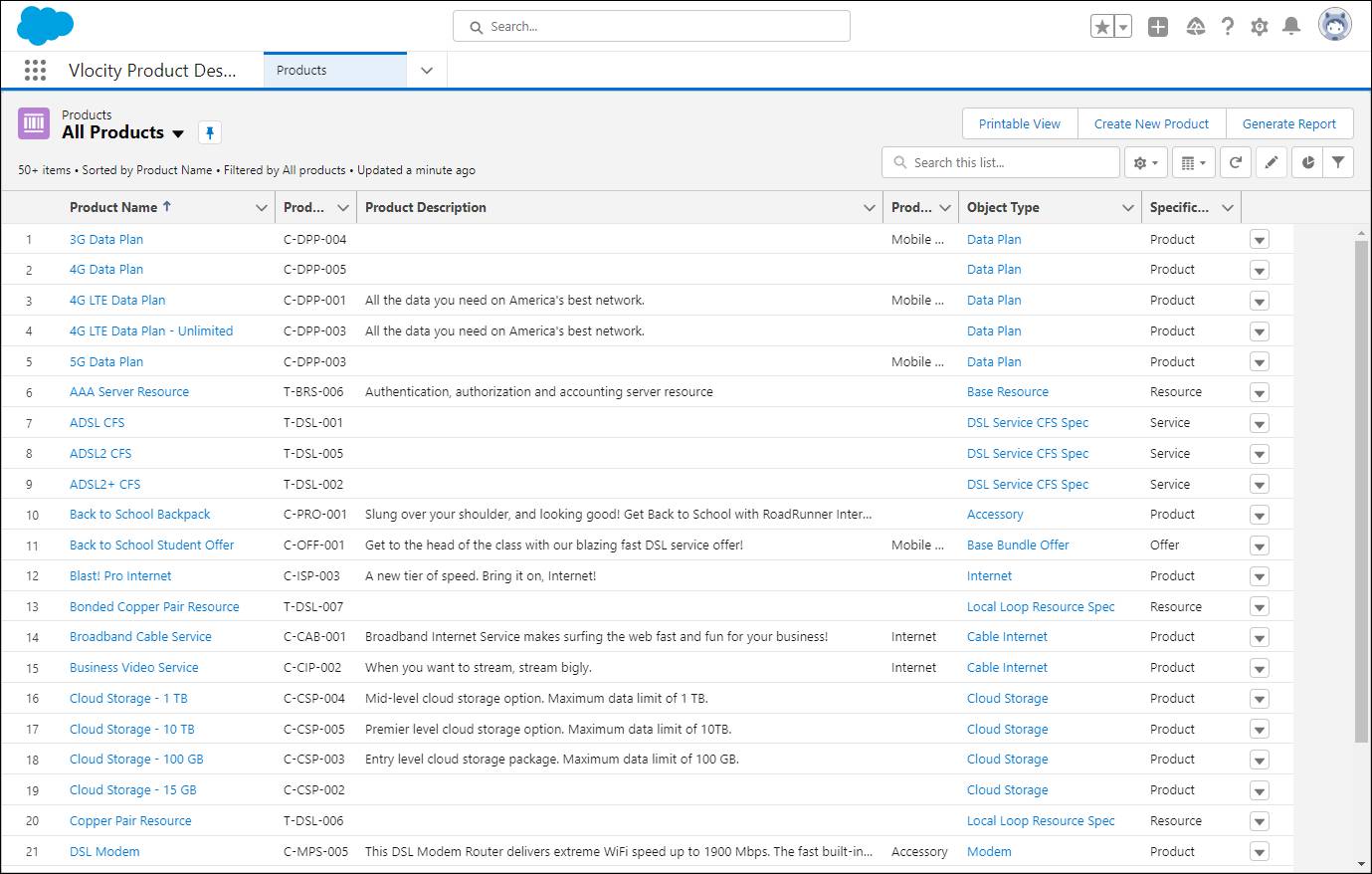Discover Product Designer
Learning Objectives
After completing this unit, you’ll be able to:
- Describe common challenges faced by product designers.
- Explain the purpose and benefits of Product Designer.
- Summarize the small-to-large offer creation workflow in Product Designer.
Common Product Challenges
As usual, Product Designer Devi Jacob arrives at the office, grabs a coffee, and takes out his laptop to continue the important work of managing his company’s extensive line of products and services. His company, Infiwave, is an internet and mobile service provider that offers internet services, mobile devices, and hardware accessories to customers. Just recently, the company expanded its catalog to include subscription and on-demand video services.

A lot goes into making Infiwave’s products available to customers. Devi must model offers to align with intricate business requirements and pricing schemes, and make quick adjustments when those needs change. He must map commercial products, the ones available for sale to customers, to the correct technical products. Technical products are the underlying back-end services and resources necessary to process orders. Before today, Devi relied on outdated spreadsheets, disconnected catalog systems, and manual price calculations to do his work.
But those days are over. With the company’s recent adoption of Industries CPQ (Configure, Price, Quote) and Shared Catalog, he can build out a crisp, new catalog from scratch. He admits, this sounds like a daunting task. But Devi knows that Product Designer, the primary tool he uses to create and manage products, is light years ahead of his previous systems. It allows him to assemble and organize his products with far less time and effort.
Sign Up for a Training Playground
We don’t have any hands-on challenges in this module. Still, if you want to practice and try out the steps, you need a special training org that contains Industries CPQ and our sample data. Regular Trailhead playgrounds and those from other modules don’t have what you need. Here’s how to get your free training org for this module.
- Sign up for your Industries Training Playground for Communications, Media, and Energy.
- Fill out the form.
- Enter your first name and last name.
- Enter an active email address.
- Enter your company name.
- Click Sign me up. A confirmation message appears.
When you receive the confirmation email (sometimes this takes a few minutes), log in to your training playground using the credentials in the email.
If you’d like to practice, keep an eye out for the practice guides in the Resources section.
What Is Product Designer?
Product Designer is your go-to Shared Catalog application for managing all aspects of your catalog offerings shared across CPQ, Contract Lifecycle Management, and Order Management systems. Product Designer supercharges the development of catalog items with versatile features to customize your offerings and seamless alignment of commercial and technical products. Its intuitive tools allow you to quickly and easily define foundational metadata components, which you use to create product templates and offers—all without writing a single line of code.
Product Designer is the environment you use to:
- Create building blocks, like attributes, picklists, and object types.
- Create new products using these building blocks.
- Organize products into bundles and forge product relationships.
- Assign prices, promotions, and discounts to create sellable offers.
With Product Designer, you can build product models to perfectly match your company requirements, whether they’re simple or incredibly complex. The Products tab of Product Designer shows you a list of all the products.

Product Designer employs cross-functional metadata to simplify and accelerate product offer creation. This means that after you’ve built out product elements, you can reuse them repeatedly to construct additional products, resources, and services for your catalog. This modular model provides great flexibility in offer configuration and speeds up product creation so you get your products to market in record time.
Starting Small
Think of offer creation in Product Designer like the assembly of an automobile. Whenever possible, most auto manufacturers utilize many of the same components across their different models to reduce resources and cost. After all, they wouldn’t want to build all the parts for each car one at a time and then repeat the entire process for another model–especially if those same components are used in both vehicles.
Instead, they begin by building all the small pieces, such as brakes, clutches, and pumps. They assemble them into larger parts, like transmissions, and finally combine the results with various other assemblies to build the car. This approach not only offers flexibility when parts must be changed or upgraded, but it also cuts down on the overall time it takes to produce large fleets of vehicles.
While Devi’s not using Product Designer to build cars, he follows a similar system when creating catalog products. He begins with the most basic components and works his way up to the complex ones. So he creates foundational components like attributes and picklists first, and then uses them to create object types and products.
Looking Ahead
Now that Devi understands the purpose and benefits of using Product Designer, he can't wait to explore its interface and see where to find which component. Let’s go Devi!